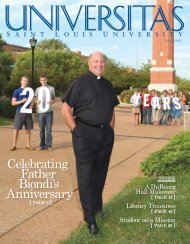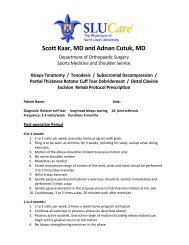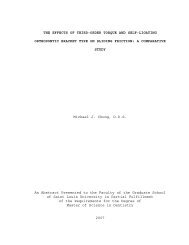PHARYNGEAL AIRWAY VOLUME FOLLOWING ...
PHARYNGEAL AIRWAY VOLUME FOLLOWING ...
PHARYNGEAL AIRWAY VOLUME FOLLOWING ...
You also want an ePaper? Increase the reach of your titles
YUMPU automatically turns print PDFs into web optimized ePapers that Google loves.
after surgery, the upper retropalatal space significantly<br />
decreased 4.2mm while the narrowest retropalatal, lowest<br />
retropalatal, and narrowest retroglossal airway spaces<br />
increased 2.9mm, 3.7mm, and 4.4mm, respectively. 42 Over the<br />
average 34 month follow-up period (range= 6 months to 9<br />
years 3 months), the upper retropalatal space increased<br />
3.9mm, almost returning to presurgical value, while the<br />
other areas remained stable. 42<br />
Computed Tomography Study<br />
Recognizing that measurements taken from a lateral<br />
cephalogram do not evaluate changes in the transverse<br />
dimension, Fairburn et al. 44 examined transverse and<br />
sagittal airway changes 3 to 6 months after MMA. In all<br />
patients, the mandible was advanced 10mm following by<br />
advancement of the maxilla to achieve a Class I occlusion.<br />
Helical computed tomography (CT) scans were obtained before<br />
and after surgery. This radiography modality scans the<br />
airway via axial slices every 2.5mm from the base of the<br />
skull to the trachea. Measurements were taken every 10mm<br />
(or every 4 th axial slice) from the level of the hard palate<br />
to the hyoid bone. At each level, the transverse airway<br />
dimensions significantly increased except at the level of<br />
the hyoid bone with the greatest change at the retroglossal<br />
13

















